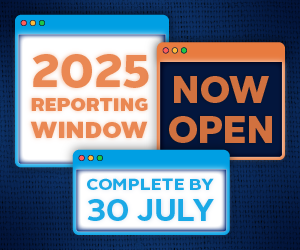By Simon Whistler, Senior Specialist, Investment Practices

Of all asset classes, infrastructure is the one where government has most direct influence over investors’ sustainability performance. In many cases, governments define the type and scale of infrastructure projects that eventually provide opportunities for infrastructure investors. They may also set the environmental, social and governance standards expected of such projects at planning, procurement, construction and operational phases.
Too often, however, governments fail to take advantage of this. In particular, global policy makers are falling short on developing a vision for how the infrastructure of today and the immediate future will help deliver on critical sustainability goals. National infrastructure strategies do not lay out a clear path for how individual countries will achieve their nationally-determined contributions to reducing climate change. Neither do they show how countries can use infrastructure investment as a means of underpinning progress towards achieving the Sustainable Development Goals (SDGs).
Our recent report, Are national infrastructure plans SDG-aligned and how can investors play their part? underlines this final point. None of the six countries we analysed – the UK, Australia, Canada, Malaysia, Chile and Kenya – include specific reference to the SDGs in their infrastructure plans. This is important because the SDGs are the clearest globally-agreed articulation of social and environmental outcomes to achieve by 2030. As such, they can set a common frame for governments to develop sustainable infrastructure project pipelines and guidelines.
The SDGs are the clearest globally-agreed articulation of social and environmental outcomes to achieve by 2030. As such, they can set a common frame for governments to develop sustainable infrastructure project pipelines and guidelines.
There are some steps in the right direction. Sustainability factors, to a greater or lesser degree, and particularly around climate issues, are included in the infrastructure plans of each country we analysed. Examples of the type of cross-departmental coordination and collaboration that these efforts require are emerging, such as Colombia’s Inter-Sectoral Commission on Climate Change. Forums or institutions for exploring public-private engagement on infrastructure planning and investment are taking shape, the Canada Infrastructure Bank being one such example.
But, as our paper argues, there is scope to go much further. The SDGs can not only set an overall direction or structure for national infrastructure planning, but they should also be operationalised through the design and procurement of projects that seek to achieve specific outcomes in line with the goals. Evidence suggests that this is happening at sub-national level in some countries, but it is time that this applied to national ambitions as well.
Effective engagement
We also argue that investors can be more proactive in this process: it shouldn’t be a case of waiting for governments to do the right thing. Infrastructure investors need to engage more effectively with governments to build more trust and alignment between the two on sustainability outcomes. Too often the conversation, where it happens, is focused on financial risks and rewards: sustainability factors get lost, often to the detriment of projects or investments later down the line.
Infrastructure practitioners also need to integrate SDG outcomes more into their own investment processes. Over the last year, we have gathered a wide range of evidence to highlight how this is happening – and where there are still shortcomings. These will be detailed in an upcoming discussion paper on the SDGs in infrastructure investing. Whether building funds or portfolios that target certain SDGs, setting KPIs that align with desired SDG outcomes, or reporting transparently on progress made towards key goals, investors can advocate for more sustainable infrastructure projects simply through the examples they set. The more collective the action, the more effective those examples will be.
Spotlight on infrastructure
If anything, current circumstances point to this need for a re-assessment of infrastructure investment priorities. The current COVID-19 global pandemic has put the spotlight firmly on governments’ health and social care infrastructure in the immediate term, but also may lead to longer-term re-evaluation of transport and telecommunications usage and needs, for example. In a different way, the UK government’s intention of ‘levelling up’ the country’s socio-economic inequalities, partly through massive infrastructure spending, also highlights how strategic decisions must take into account broader factors than simple cost or traditional value-for-money calculations.
For both, the SDGs can provide a clear frame of reference for setting new priorities. As the ‘Decade of Action’ on the SDGs begins, we encourage both governments and infrastructure investors to take up the mantle.
This blog is written by PRI staff members and guest contributors. Our goal is to contribute to the broader debate around topical issues and to help showcase some of our research and other work that we undertake in support of our signatories.
Please note that although you can expect to find some posts here that broadly accord with the PRI’s official views, the blog authors write in their individual capacity and there is no “house view”. Nor do the views and opinions expressed on this blog constitute financial or other professional advice.
If you have any questions, please contact us at [email protected].












